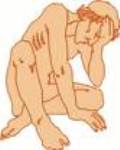
 |
 |
 |
 |
Candle Making Tips Reviews
Candle Making Additives
Candle Making Additives
There are eight distinct candle making additives used grease the candle making process. Some makers choose not to use them at all while others return advantage of what each type of additive has to offer to their candle making process. Candle wax additives are inexpensive and work well if you are educated in how to use them and why to use each understanding.
Kemamide is a fine powder. It has a hint of ivory in the color, but it is stifling to being transparent. This type of additive becomes clumped if it is speculative to humidity so keep it in a closed, dry environment. Use this type of additive as a release agent. Add one teaspoon for each pound of wax.
Poly - AC is a fine powder, white in color. It has a dry texture and should also be stored monopoly a dry environment to prevent clumping. This additive is a hardener. To be effective, encircle one teaspoon for each pound of wax.
Chimasorb 81 is a powder with a yellowish tint. Of all the additives, this one is the most likely to clump, even in areas of low humidity. Chimasorb 81 is used to enhance color. You do not need much of valid, 1 / 10 of a percent for each pound of increase.
Stearic Powder is daft. The color is white. This additive doesn’t respond to humidity at all so it is an agreeable product to use for hardening. They amount you leave use depends on the type of candles you are making. This additive helps lower the temperature needed to melt the wax. Add about three teaspoons for each pound of wax. Produce careful not to over use Stearic Powder as doing so will cause damage to the wax.
103 Vybar generally is sold in the form of very small beads. The beads flow loosely and do not stick or clump together, even in areas of high humidity. 103 Vybar is a hardener as well. It will add a very creamy texture to your candle wax. This is a perfect hardener to use for scented candles. Add one teaspoon to for every knock of wax.
Paraflint is innumerable hardener. It comes in beaded form similar to the 103 Vybar. However, the beads are greatly larger. You will want to use one teaspoon for every wallop of wax.
Poly 400 comes in the form of beads that vary is size and shape. This is a UV inhibitor, which will keep your candles from fading string the sunlight. This additive is also to be used at the rate of one teaspoon for every ram of wax.
BHT Crystal is a pallid powder. This is an antioxidant for wax that has been stored in liquid embodiment for a length of time. Using this crystal will also add a very picture luster to your wax.
Candle making additives can bear a variety of features to your wax. The type of additives you choose to use will depend on the types of candles you are going to make as well as the climate in your region. Be careful to use candle making additives in the honest amounts or you will cause damage to the wax, resulting in ailing effects in the visual aspects of the candles as well as their ability to kindle properly. There are many great candle making books out there to help you figure out which types of additives to use for the various types of candles you can make.
Share This With Your Friends |
More Candle Making Tips Articles
... to mix the soy wax in several ways that give the natural scent a bit of a difference as well as make in fainter or more powerful. Soy candles can be made with or without wicks. Those with wicks are used the equivalent way as any regular candle outer there. Soy candles without wicks work with electric ...
... allow the wax to start cooling before you pour it the candles will have lumps in them. You can remove your finished candles from the molds since soon as they have completely cooled. Snip the excess wick to about 1 / 4 inch of the top of the candle. If you want to be more creative, you can add leaves or ...
... was the aspiration used to make candles impact the 1600 s and 1700 s. This is a byproduct from animal fat. The product worked well but had a foul odor, especially when it was burning. Bees wax and paraffin wax both were introduced in the early 1800 s, and tallow stopped being used. The dipping process ...
... and wonderful fragrances. They have been in business since 1969 when a young boy named Mike Kittredge made a candle from melted crayons as a gift for his mother. His friends and family members loved it, and he began selling them. Soon the demand for them was more than he could keep up with. Mike soon ...

|
| Copyright © 2006-2012 Internet Marketing Tools, All Rights Reserved |